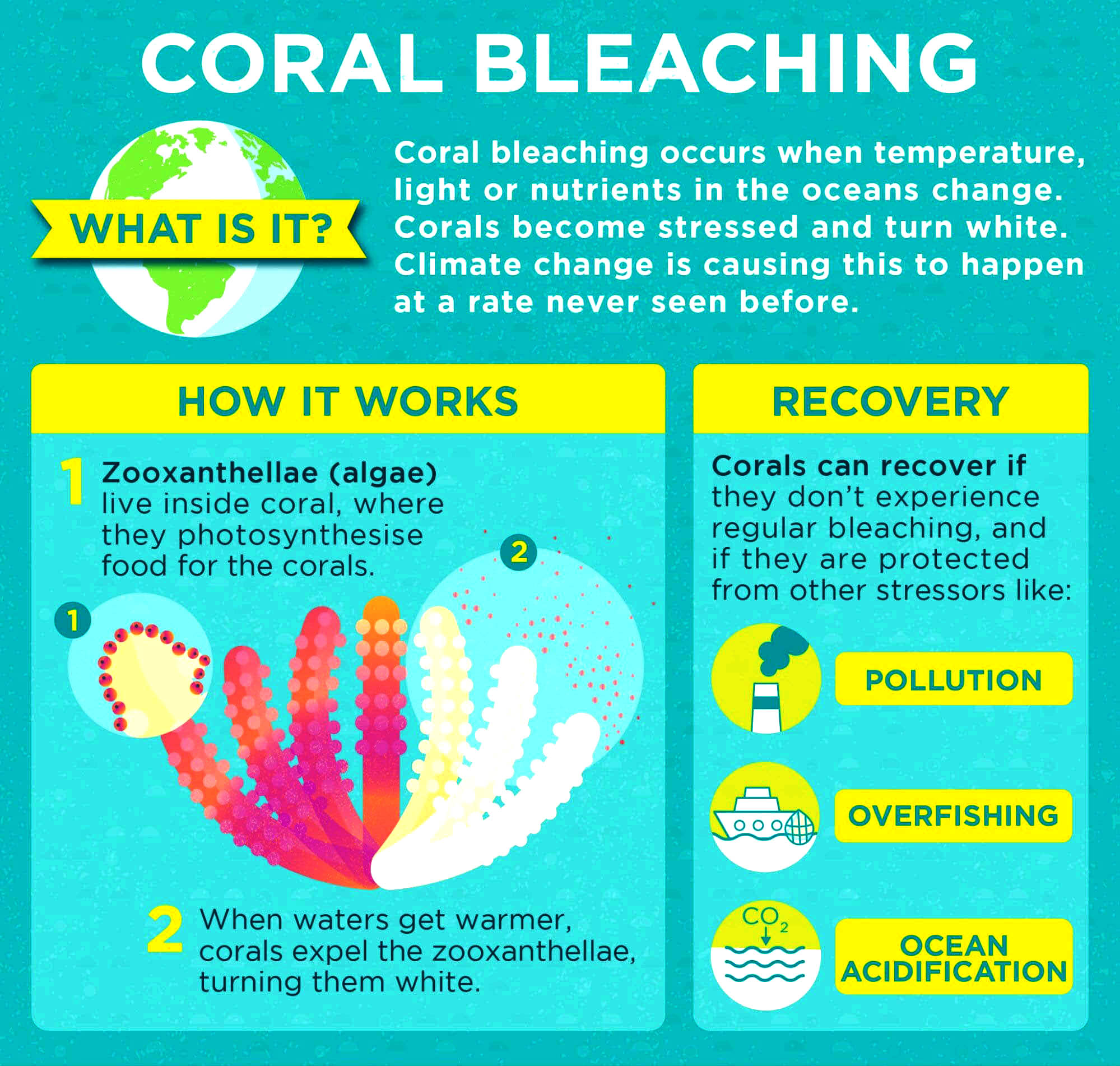Biodiversity & Environment
Great Barrier Reef: IPCC
- 07 Mar 2022
- 7 min read
For Prelims: Great Barrier Reef, Intergovernmental Panel on Climate Change.
For Mains: Significance of Coral Reefs and Initiatives to protect it, Conservation.
Why in News?
Recently, a report published by the Intergovernmental Panel on Climate Change (IPCC) states that the Great Barrier Reef is in crisis and suffering grave impacts from climate change.
- The report points to three previous mass bleaching events from 2016 to 2020 that caused significant coral loss, and warns that there has been “mass mortality” of some coral species.
- Great Barrier Reef, world's largest coral reef complex, located in the Pacific Ocean off northeastern Australia.
What are the Findings of the Report?
- Warming ocean temperature is causing frequent and severe coral bleaching.
- The worst bleaching event, in 2016, affected over 90% of the reef, and a punishing succession of bleaching incidents has left the northern and middle portion of the reef system in a highly degraded state.
- Even if the global community achieves its goal of limiting future warming to 1.5 degrees Celsius since pre-industrial times, that still wouldn’t be sufficient to prevent more frequent mass bleaching events, though it may reduce their occurrence.
- The ocean warming and marine heatwaves will cause the loss and degradation of tropical shallow coral reefs, leading to “widespread destruction” of coral reef ecosystems.
- If bleaching persists, the IPCC estimates 10,000 jobs and AUD1 billion in revenue would be lost every year from declines in tourism alone.
- Around a billion people worldwide rely on coral reefs for their everyday living, which is why a failure to urgently reduce greenhouse gas emissions could have devastating effects for humanity.
- Beyond the reef, climate change will lead to a surge in heat-related deaths in Australia, the extinction of certain animal species, and more wildfires.
- Koalas are at risk of local extinctions due to increasing drought and rising temperatures.
- And rising sea levels and storm surges led to the recent extinction of a rodent species called Bramble Cay melomys, which lived on a remote cay in the northern Great Barrier Reef.
- Black Summer fires of late 2019 and early 2020 that killed at least 33 people and destroyed more than 3,000 homes.
- Even Australia’s famed eucalyptus trees, which are naturally resilient to the country’s seasonal fires, may not be able to withstand the ferocity and frequency of the predicted blazes, which could lead to the decimation of forests.
- The report also provides extensive lists of climate adaptation strategies, such as improving building standards so that homes stay cooler during potentially deadly heat waves.
PYQ
The scientific view is that the increase in global temperature should not exceed 2°C above preindustrial level. If the global temperature increases beyond 3°C above the pre-industrial level, what can be its possible impact/impacts on the world? (2014)
- Terrestrial biosphere tends toward a net carbon source.
- Widespread coral mortality will occur.
- All the global wetlands will permanently disappear.
- Cultivation of cereals will not be possible anywhere in the world.
Select the correct answer using the code given below:
(a) 1 only
(b) 1 and 2 only
(c) 2, 3 and 4 only
(d) 1, 2, 3 and 4
Ans: (b)
What is the Great Barrier Reef?
- It is the world’s most extensive and spectacular Coral Reef ecosystem composed of over 2,900 individual reefs and 900 islands.
- The reef is located in the Coral Sea (North-East Coast), off the coast of Queensland, Australia.
- It can be seen from outer space and is the world’s biggest single structure made by living organisms.
- This reef structure is composed of and built by billions of tiny organisms, known as coral polyps.
- They are made up of genetically identical organisms called polyps, which are tiny, soft-bodied organisms. At their base is a hard, protective limestone skeleton called a calicle, which forms the structure of coral reefs.
- These polyps have microscopic algae called zooxanthellae living within their tissues. The corals and algae have a mutualistic (symbiotic) relationship.
- It was selected as a World Heritage Site in 1981.
PYQ
Which of the following have coral reefs? (2014)
- Andaman and Nicobar Islands
- Gulf of Kachchh
- Gulf of Mannar
- Sunderbans
Select the correct answer using the code given below:
(a) 1, 2 and 3 only
(b) 2 and 4 only
(c) 1 and 3 only
(d) 1, 2, 3 and 4
Ans: (a)
What are the Initiatives to Protect Corals?
- A number of global initiatives are being taken to address the issues, like:
- International Coral Reef Initiative
- Global Coral Reef Monitoring Network (GCRMN)
- Global Coral Reef Alliance (GCRA)
- The Global Coral Reef R&D Accelerator Platform
- Similarly, the Ministry of Environment and Forests and Climate Change (MoEF&CC), India has included the studies on coral reefs under the Coastal Zone Studies (CZS).
- In India, the Zoological Survey of India (ZSI), with help from Gujarat’s forest department, is attempting a process to restore coral reefs using “biorock” or mineral accretion technology.
- National Coastal Mission Programme, to protect and sustain coral reefs in the country.
PYQ
Consider the following statements: (2018)
- Most of the world’s coral reefs are in tropical waters.
- More than one-third of the world’s coral reefs are located in the territories of Australia, Indonesia and Philippines.
- Coral reefs host far more number of animal phyla than those hosted by tropical rainforests.
Which of the statements given above is/are correct?
(a) 1 and 2 only
(b) 3 only
(c) 1 and 3 only
(d) 1, 2 and 3
Ans: (d)






-min.jpg)